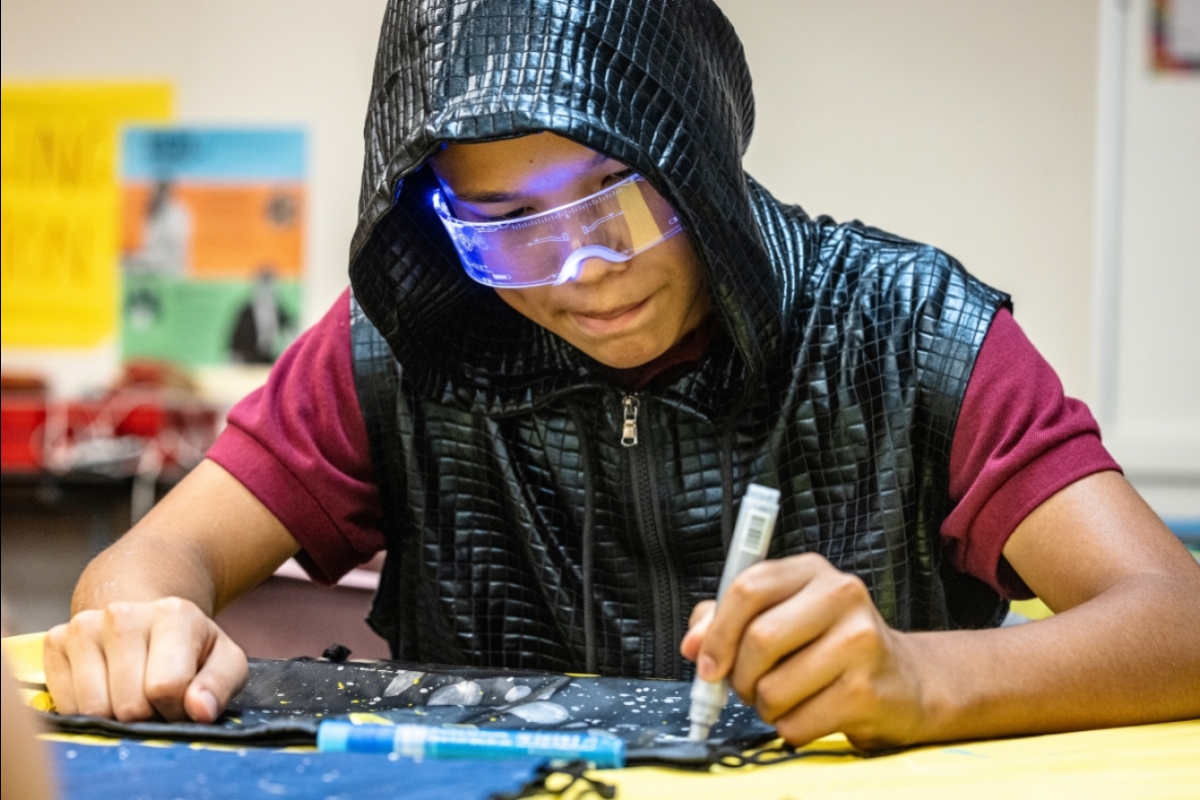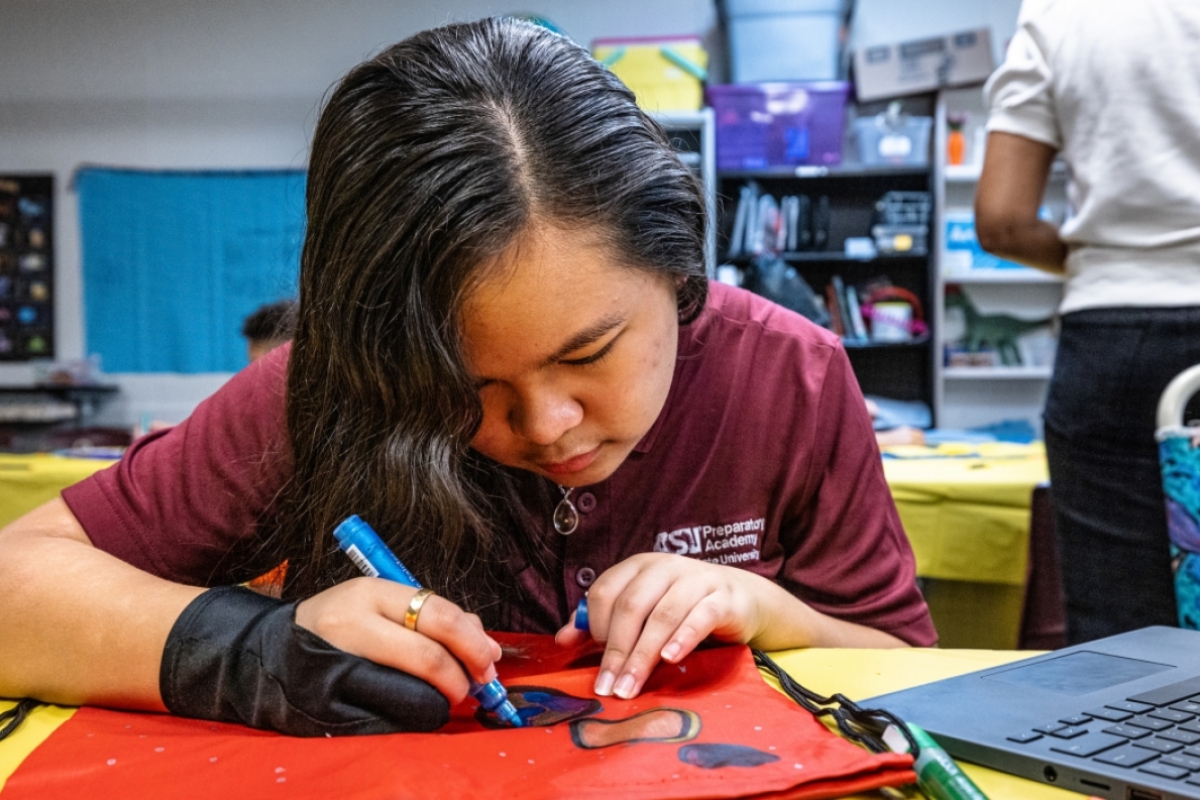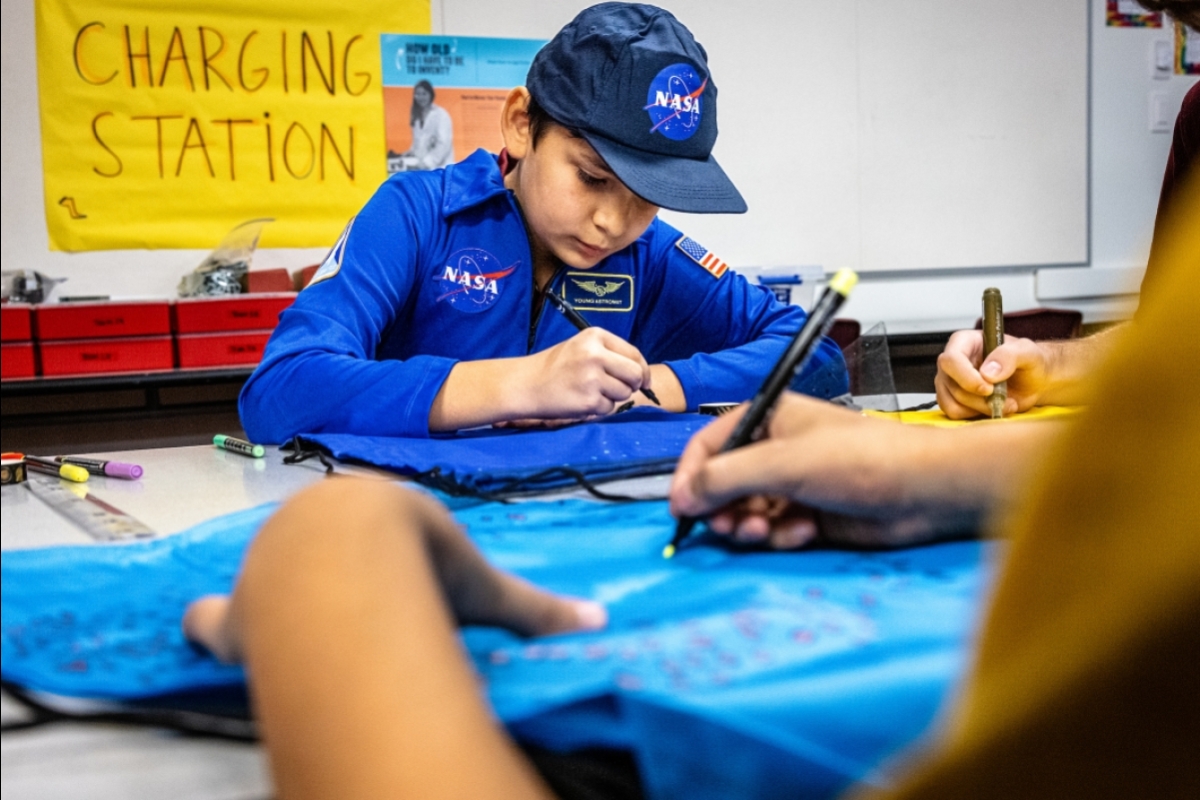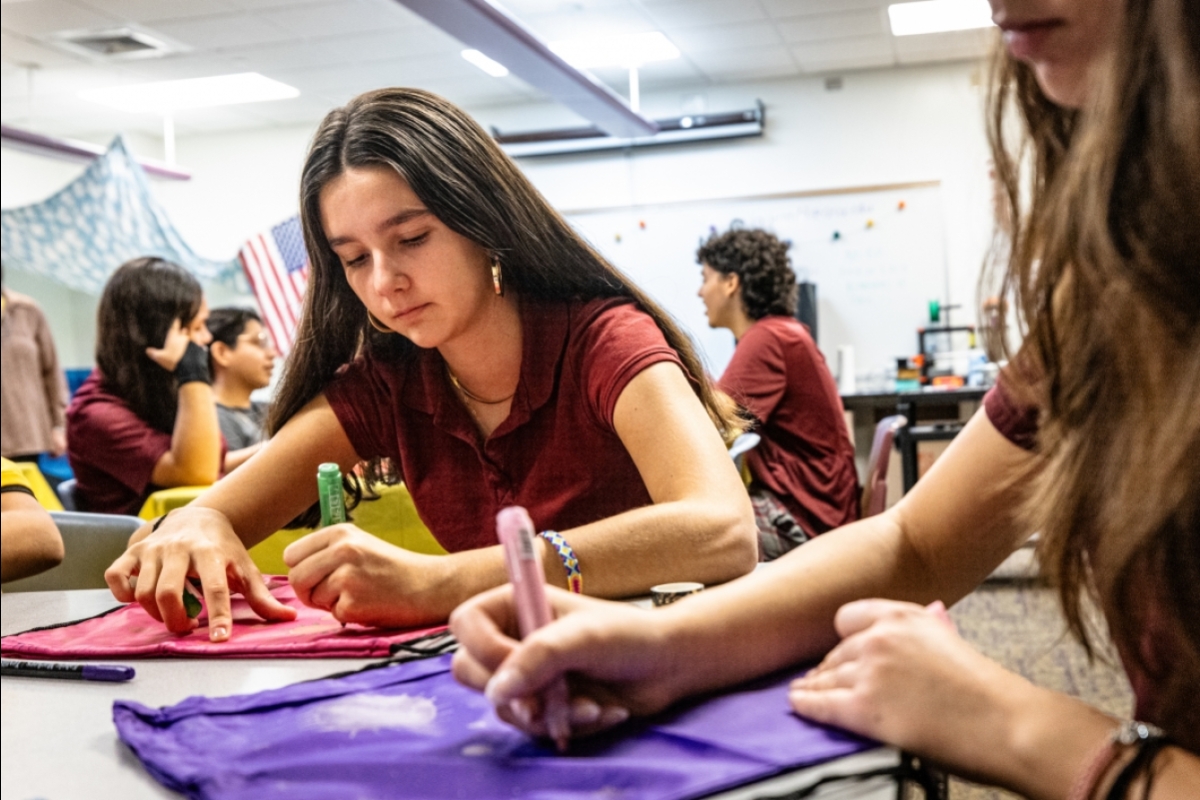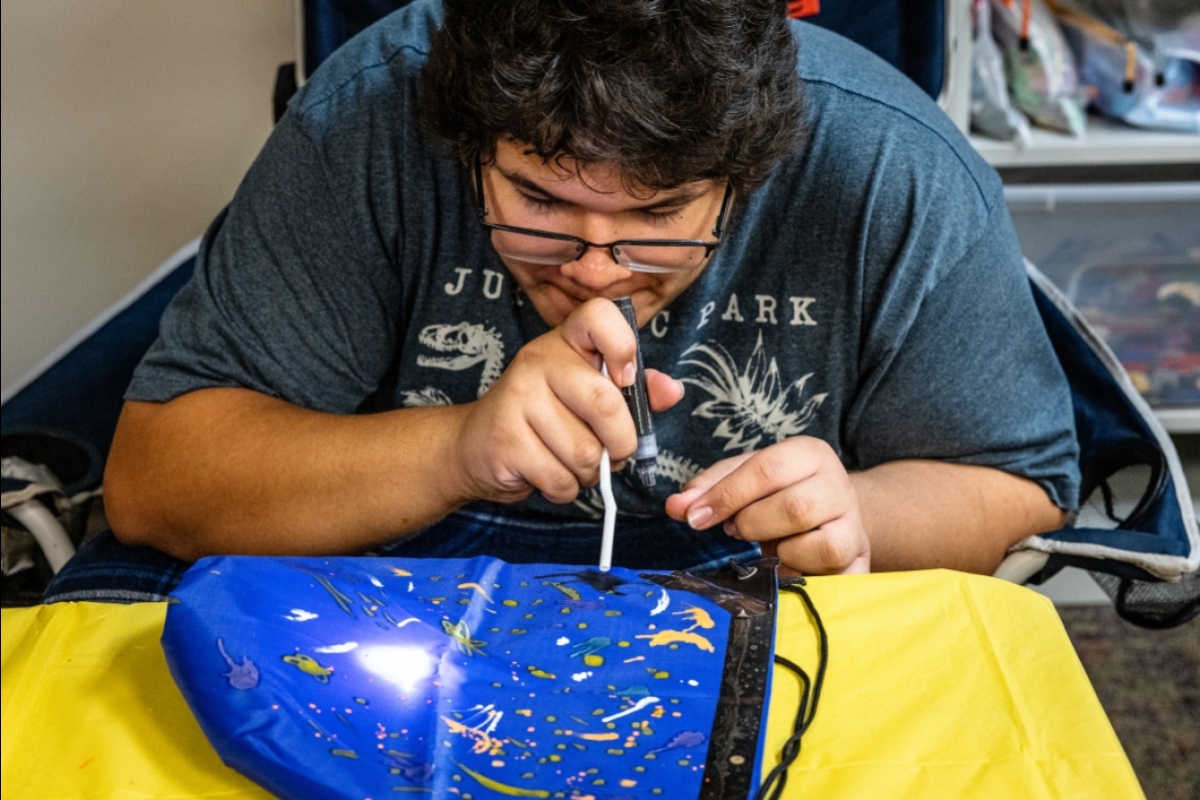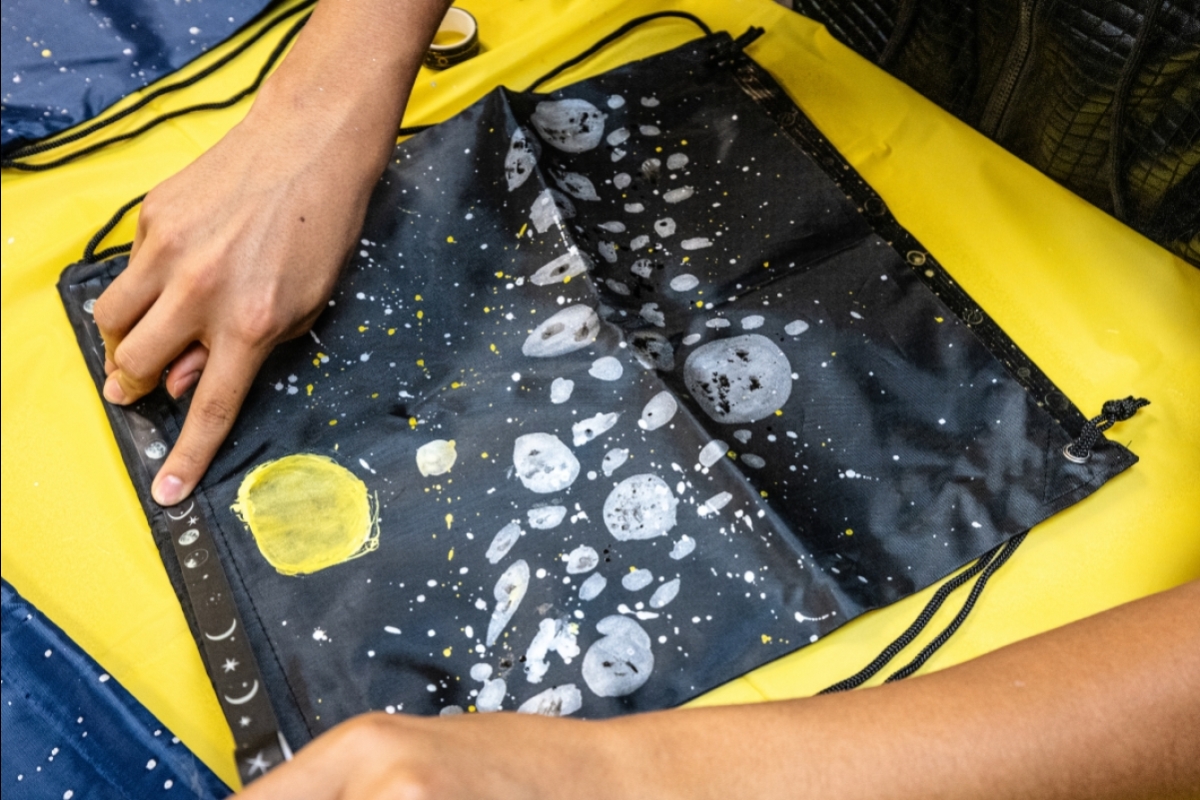Editor's note: On Sept. 28, NASA announced that the Psyche launch is now targeted for Oct. 12. The photo contest is still planned for Oct. 2–6, and Access ASU hopes to share participants' photos on the new launch date.
Access ASU, a K–12 enrichment division at Arizona State University dedicated to increasing access to higher education and preparing Arizona students for success, is celebrating the ASU-led NASA Psyche mission launch with a themed spirit week and photo contest for students throughout the state. The Psyche mission, selected by NASA’s Discovery Program, is scheduled to launch on Oct. 5, starting its journey to an asteroid orbiting the sun between Mars and Jupiter.
Access ASU’s Psyche Mission Spirit Week aims to highlight the significance of career exploration for elementary, middle and high school students. By showcasing students’ imaginative costumes and themes representing professions related to space exploration, Access ASU hopes to inspire young minds to dream big and explore endless possibilities for their future careers.
RELATED: More ways to get involved with the Psyche mission
“The Psyche mission launch is an incredible event to inspire Arizona students and spark discussions about space exploration and STEM careers,” said ASU Associate Vice President for Outreach Allison Otu. “Since the Psyche mission transit will last six years (after which it will orbit the asteroid for about two years), we want Arizona middle and high school students to know there is a possibility they could work on the active mission as ASU students.”
Psyche Spirit Week will run from Oct. 2–6 with the following schedule:
- Monday, Oct. 2: Asteroid Belt Accessories Day. Students should design and wear a special accessory — belt, shoelaces, jewelry, purse, hat, glasses, etc. — that represents the main asteroid belt.
- Tuesday, Oct. 3: Cosmic Careers Tuesday. Students should dress up as their favorite space-related career — astronomer, astronaut, engineer, journalist, chemist, etc.
- Wednesday, Oct. 4: Out-of-This-World Wednesday. Students should sport futuristic or sci-fi costumes.
- Thursday, Oct. 5: Asteroids and Aspirations. Psyche mission launch day! Classes and individuals can sign up for NASA's virtual launch experience via Eventbrite and can follow along with the action at Kennedy Space Center in Florida.
- Friday, Oct. 6: Galactic Team Friday. Students should dress up as different mission teams — teachers, scientists, engineers, Mission Control and more.
All Arizona schools and families are welcome to participate and share their photos from the spirit days for a chance to win a VIP tour visiting the ASU School of Earth and Space Exploration's space operations, such as the 3D Astronomy Show, the Mars Space Flight Facility and Science Operations Center. Parking, tour fees and a transportation stipend will be provided. Learn more about the photo contest, including how to enter, on the official contest site.
ASU leads the Psyche mission in partnership with Jet Propulsion Laboratories at the California Institute of Technology. Classrooms and families are encouraged to watch the Psyche launch live on Oct. 5 around 7:30 a.m. MST (exact timing is subject to change, so sign up for the virtual launch experience above to be kept in the loop on the latest timing).
The launch will begin a nearly six-year, 2.2 billion-mile journey to an unexplored asteroid of the same name. The team has hypothesized that the metal-rich asteroid is core material of a planetesimal, a building block of an early planet. Studying that object far away may give us insight into how Earth and the other terrestrial planets formed.To learn more about the mission, visit psyche.asu.edu.
Not in Arizona or not in K–12 but still want to take part in Psyche activities? Everyone is welcome to take part in the Oct. 7-8 NASA International Space Apps Challenge, in which participants will work on a variety of challenges, from designing a solution to better monitor wildfires to sharing the wonder of the Artemis mission to mapping moonquakes to planning a party for the upcoming launch of the Psyche mission to a metal asteroid. Find more information here.
Top photo: Eighth grader Benjamin Graves, 13, shows off a NASA astronaut costume on Sept. 15 at ASU Prep in downtown Phoenix. In teacher Julie Johnson’s 7–12 robotics class, students spent the first hour making and decorating asteroid belt accessory string bags as part of the Psyche Mission Spirit Week. Photo by Charlie Leight/ASU News
More Science and technology

Cracking the code of online computer science clubs
Experts believe that involvement in college clubs and organizations increases student retention and helps learners build valuable social relationships. There are tons of such clubs on ASU's campuses…
Consortium for Science, Policy & Outcomes celebrates 25 years
For Arizona State University's Consortium for Science, Policy & Outcomes (CSPO), recognizing the past is just as important as designing the future. The consortium marked 25 years in Washington, D…
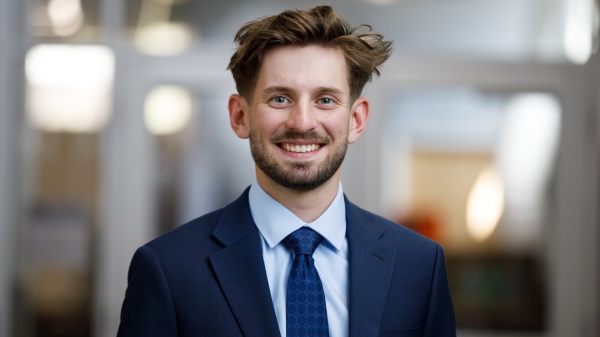
Hacking satellites to fix our oceans and shoot for the stars
By Preesha KumarFrom memory foam mattresses to the camera and GPS navigation on our phones, technology that was developed for space applications enhances our everyday lives on Earth. In fact, Chris…

